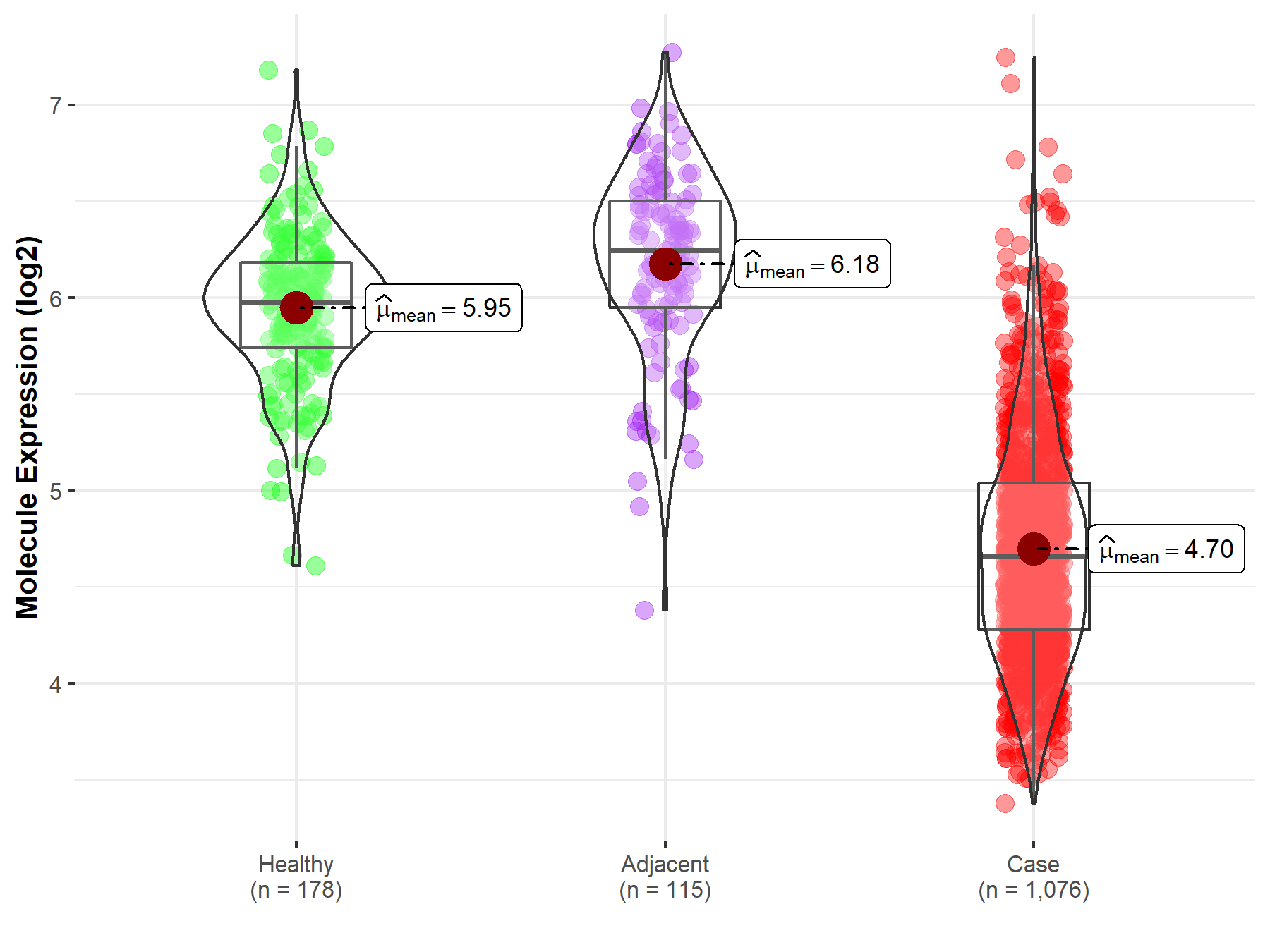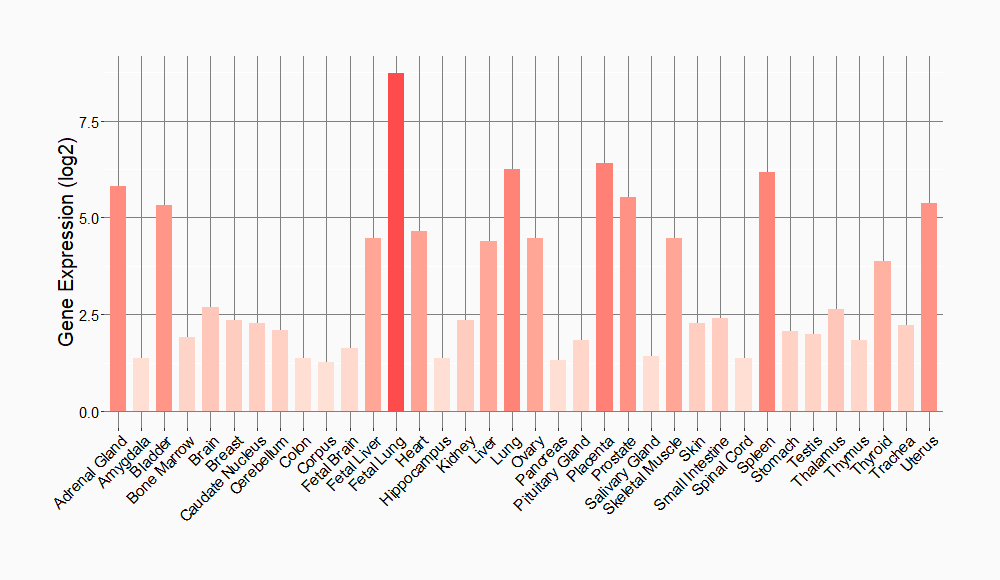Molecule Information
General Information of the Molecule (ID: Mol01919)
| Name |
Tyrosine kinase with immunoglobulin like and EGF like domains 1 (TIE1)
,Homo sapiens
|
||||
|---|---|---|---|---|---|
| Synonyms |
TIE1; TIE
Click to Show/Hide
|
||||
| Molecule Type |
Protein
|
||||
| Gene Name |
TIE1
|
||||
| Gene ID | |||||
| Location |
chr1:43,300,982-43,323,108[+]
|
||||
| Sequence |
MVWRVPPFLLPILFLASHVGAAVDLTLLANLRLTDPQRFFLTCVSGEAGAGRGSDAWGPP
LLLEKDDRIVRTPPGPPLRLARNGSHQVTLRGFSKPSDLVGVFSCVGGAGARRTRVIYVH NSPGAHLLPDKVTHTVNKGDTAVLSARVHKEKQTDVIWKSNGSYFYTLDWHEAQDGRFLL QLPNVQPPSSGIYSATYLEASPLGSAFFRLIVRGCGAGRWGPGCTKECPGCLHGGVCHDH DGECVCPPGFTGTRCEQACREGRFGQSCQEQCPGISGCRGLTFCLPDPYGCSCGSGWRGS QCQEACAPGHFGADCRLQCQCQNGGTCDRFSGCVCPSGWHGVHCEKSDRIPQILNMASEL EFNLETMPRINCAAAGNPFPVRGSIELRKPDGTVLLSTKAIVEPEKTTAEFEVPRLVLAD SGFWECRVSTSGGQDSRRFKVNVKVPPVPLAAPRLLTKQSRQLVVSPLVSFSGDGPISTV RLHYRPQDSTMDWSTIVVDPSENVTLMNLRPKTGYSVRVQLSRPGEGGEGAWGPPTLMTT DCPEPLLQPWLEGWHVEGTDRLRVSWSLPLVPGPLVGDGFLLRLWDGTRGQERRENVSSP QARTALLTGLTPGTHYQLDVQLYHCTLLGPASPPAHVLLPPSGPPAPRHLHAQALSDSEI QLTWKHPEALPGPISKYVVEVQVAGGAGDPLWIDVDRPEETSTIIRGLNASTRYLFRMRA SIQGLGDWSNTVEESTLGNGLQAEGPVQESRAAEEGLDQQLILAVVGSVSATCLTILAAL LTLVCIRRSCLHRRRTFTYQSGSGEETILQFSSGTLTLTRRPKLQPEPLSYPVLEWEDIT FEDLIGEGNFGQVIRAMIKKDGLKMNAAIKMLKEYASENDHRDFAGELEVLCKLGHHPNI INLLGACKNRGYLYIAIEYAPYGNLLDFLRKSRVLETDPAFAREHGTASTLSSRQLLRFA SDAANGMQYLSEKQFIHRDLAARNVLVGENLASKIADFGLSRGEEVYVKKTMGRLPVRWM AIESLNYSVYTTKSDVWSFGVLLWEIVSLGGTPYCGMTCAELYEKLPQGYRMEQPRNCDD EVYELMRQCWRDRPYERPPFAQIALQLGRMLEARKAYVNMSLFENFTYAGIDATAEEA Click to Show/Hide
|
||||
| Function |
Transmembrane tyrosine-protein kinase that may modulate TEK/TIE2 activity and contribute to the regulation of angiogenesis.
Click to Show/Hide
|
||||
| Uniprot ID | |||||
| Ensembl ID | |||||
| HGNC ID | |||||
| Click to Show/Hide the Complete Species Lineage | |||||
Type(s) of Resistant Mechanism of This Molecule
Drug Resistance Data Categorized by Drug
Approved Drug(s)
1 drug(s) in total
| Drug Resistance Data Categorized by Their Corresponding Mechanisms | ||||
|
|
||||
| Disease Class: Lung adenocarcinoma | [1] | |||
| Resistant Disease | Lung adenocarcinoma [ICD-11: 2C25.0] | |||
| Resistant Drug | Cisplatin | |||
| Molecule Alteration | Expression | Up-regulation |
||
| Experimental Note | Identified from the Human Clinical Data | |||
| Cell Pathway Regulation | Cell migration | Activation | hsa04670 | |
| Cell viability | Activation | hsa05200 | ||
| In Vitro Model | A549 cells | Lung | Homo sapiens (Human) | CVCL_0023 |
| NCI-H460 cells | Lung | Homo sapiens (Human) | CVCL_0459 | |
| NCI-H1975 cells | Lung | Homo sapiens (Human) | CVCL_1511 | |
| NCI-H520 cells | Lung | Homo sapiens (Human) | CVCL_1566 | |
| In Vivo Model | BALB/c male nude mice | Mus musculus | ||
| Experiment for Molecule Alteration |
Western blotting analysis; qRT-PCR | |||
| Experiment for Drug Resistance |
CCK-8 assay | |||
| Mechanism Description | Hypoxia could induce stemness and cisplatin resistance in vitro. Tie1 was expressed at low levels in NSCLC cells when compared with human pulmonary microvascular endothelial cells, however, its expression was increased by hypoxia. Additionally, Tie1 knockdown could reduce stemness properties and increase sensitivity to cisplatin in vitro and in a xenograft mouse model. The promoter of Tie1 contains two predicted hypoxia-response elements (HREs). | |||
| Disease Class: Lung adenocarcinoma | [1] | |||
| Resistant Disease | Lung adenocarcinoma [ICD-11: 2C25.0] | |||
| Resistant Drug | Cisplatin | |||
| Molecule Alteration | Expression | Up-regulation |
||
| Experimental Note | Identified from the Human Clinical Data | |||
| Cell Pathway Regulation | Cell migration | Activation | hsa04670 | |
| Cell viability | Activation | hsa05200 | ||
| In Vitro Model | A549 cells | Lung | Homo sapiens (Human) | CVCL_0023 |
| NCI-H460 cells | Lung | Homo sapiens (Human) | CVCL_0459 | |
| NCI-H1975 cells | Lung | Homo sapiens (Human) | CVCL_1511 | |
| NCI-H520 cells | Lung | Homo sapiens (Human) | CVCL_1566 | |
| In Vivo Model | BALB/c male nude mice | Mus musculus | ||
| Experiment for Molecule Alteration |
Western blotting analysis; qRT-PCR | |||
| Experiment for Drug Resistance |
CCK-8 assay | |||
| Mechanism Description | Hypoxia could induce stemness and cisplatin resistance in vitro. Tie1 was expressed at low levels in NSCLC cells when compared with human pulmonary microvascular endothelial cells, however, its expression was increased by hypoxia. Additionally, Tie1 knockdown could reduce stemness properties and increase sensitivity to cisplatin in vitro and in a xenograft mouse model. The promoter of Tie1 contains two predicted hypoxia-response elements (HREs). | |||
Disease- and Tissue-specific Abundances of This Molecule
ICD Disease Classification 02

| Differential expression of molecule in resistant diseases | ||
| The Studied Tissue | Lung | |
| The Specified Disease | Lung cancer | |
| The Expression Level of Disease Section Compare with the Healthy Individual Tissue | p-value: 6.72E-115; Fold-change: -1.31E+00; Z-score: -3.31E+00 | |
| The Expression Level of Disease Section Compare with the Adjacent Tissue | p-value: 5.15E-66; Fold-change: -1.59E+00; Z-score: -3.25E+00 | |
|
Molecule expression in the normal tissue adjacent to the diseased tissue of patients
Molecule expression in the diseased tissue of patients
Molecule expression in the normal tissue of healthy individuals
|
||
| Disease-specific Molecule Abundances |

|
Click to View the Clearer Original Diagram |
Tissue-specific Molecule Abundances in Healthy Individuals


|
||
References
visits since 2022
If you find any error in data or bug in web service, please kindly report it to Dr. Sun and Dr. Zhang.
